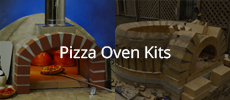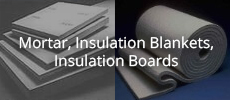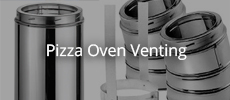Re: Saftey Issues
No question about that!!!!
This is a sticky topic.
X
X
-
Re: Saftey Issues
Alcohol and power tools are a great combination - as long as you were planning on visiting the Emergency Room on an extended basis.
Otherwise, yeah, that!
Leave a comment:
-
Re: Saftey Issues
If it was not said before......alcohol and power tools are not a good combination.
Leave a comment:
-
Re: Saftey Issues
Here is a good website that goes into the differences and health aspects of various insulating fibers. HTIW Coalition
Leave a comment:
-
Re: Saftey Issues
The bio soluble fibres do not fall in the RCF category and have been exonerated as a class 2 (ie tumours in animal tests, but none reported in humans) carcinogen.
Leave a comment:
-
Re: Saftey Issues
That is fine, but it still applies to everyday exposure, not building one oven in your life. Take normal precautions like you would for anything, and don't obsess about it, it is NOT a dangerous process or product for the hobbyist.
Leave a comment:
-
Re: Saftey Issues
tscar,
In my occupation as a Pulmonary Diagnostic Specialist, I have treated, and cared for many people who only had limited exposure to silica dust and asbestos. Most of them were the spouse, or children of railroad brakemen, auto mechanics, brick masons,cement factory workers, refractory furnace operators etc., whose only contact came from giving dad a hug when he got home from work, or doing his laundry. So it doesn't have to be all day every day.
Jeff
Leave a comment:
-
Re: Saftey Issues
The key words are "occupational exposure". That means all day every day, not once in your life.
Leave a comment:
-
Re: Saftey Issues
May as well let the CDC know they posted misinformation on their website also..This criteria document is derived from reviews of information from human and animal studies of the toxicity of refractory ceramic fibers (RCFs) and is intended to describe the potential health effects of occupational exposure to airborne fibers of this material. RCFs are amorphous synthetic fibers produced by the melting and blowing or spinning of calcined kaolin clay or a combination of alumina, silica, and other oxides. RCFs belong to the class of synthetic vitreous fibers (SVFs)-materials that also include fibers of glass wool, rock wool, slag wool, and specialty glass. RCFs are used in commercial applications requiring lightweight, high-heat insulation (e.g., furnace and kiln insulation). Commercial production of RCFs began in the 1950s in the United States, and production increased dramatically in the 1970s. Domestic production of RCFs in 1997 totaled approximately 107.7 million lb. Currently, total U.S. production has been estimated at 80 million lb per year, which constitutes 1% to 2% of SVFs produced worldwide. In the United States, approximately 31,500 workers have the potential for occupational exposure to RCFs during distribution, handling, installation, and removal. More than 800 of these workers are employed directly in the manufacturing of RCFs and RCF products. With increasing production of RCFs, concerns about exposures to airborne fibers prompted animal inhalation studies that have indicated an increased incidence of mesotheliomas in hamsters and lung cancer in rats following exposure to RCFs. Studies of workers who manufacture RCFs have shown a positive association between increased exposure to RCFs and the development of pleural plaques, skin and eye irritation, and respiratory symptoms and conditions (including dyspnea, wheezing, and chronic cough). In addition, current and former RCF production workers have shown decrements in pulmonary function....
Leave a comment:
-
Re: Saftey Issues
We may need to alert the mfrs is what you say is true, as the MSDS they put out with their product says otherwise, see below....Originally posted by jpar View PostBoth ceramic fiber and soluble fiber contain silica, which if heated to elevated temperatures (i believe above 1700 degrees F) form crystalline silica. Crystalline silica is what causes silicosis. You are exposed to crystalline silica every time you cut a hard brick, pour concrete, or even walk on the beach.
There has never been a documented case of disease or death caused by ceramic fiber. Ceramic fiber dissolves in the body after about 7 mos. Bio-soluble fibers are designed dissolve in about 2 weeks. Asbestos never dissolves.
The major manufacturers (Fiberfrax, Kaowool)are very careful in making sure that there are no problems or impurities associated with their products. I am concerned about the imported Chinese blankets and boards. These companies dont follow the safety precautions. There is a reason the blankets sold by these importers cost less! Who actually manufactures the cheap blanket sold by McGills? Where does Forno Bravo get their blanket?
Eye Contact: Check for and remove any contact lenses. Do not use an eye ointment. Seek medical attention. If as you say they dissolve....why worry, nobody really uses their eyes anymore
Skin Contact: After contact with skin, wash immediately with plenty of water. Gently and thoroughly wash the contaminated skin with running water and non-abrasive soap. Be particularly careful to clean folds, crevices, creases and groin. Since the product can readily penetrate the protective epidermal layer and cause rashes or eczema, a good hand cream should be used after washing affected areas. Seek medical attention.If as you say they dissolve....why worry who need gonads anyway....
Serious Skin Contact: Wash with a disinfectant soap and cover the contaminated skin with an anti-bacterial cream. Seek medical attention.
Inhalation: Allow the victim to rest in a well ventilated area. Seek immediate medical attention. If as you say they dissolve....why worry skin is highly over rated
Serious Inhalation: Not available.
Ingestion: Do not induce vomiting. Loosen tight clothing such as a collar, tie, belt or waistband. If the victim is not breathing, perform mouth-to-mouth resuscitation. Seek immediate medical attention. Hmmm if they are so safe...why wouldn't a person be breathing
OK so we're talking about Calcium Silicate ( Ca2O4Si) basically two molocules of Calcium, bound to 4 molecules of Oxygen, and on molecule of Silica. Calcium does dissolve in the body and is essential for our metabolic functioning as is Oxygen. Silica....not so much, but as it's bound to the others and is a traveling companion when ingested either orally, through skin contact, or inhaled, in amounts that are different for every human being on this planet, based on their current health status or other environmental concerns. Remember asbestos was SAFE also until people started dying from exposure to it. BTW Asbestos is a set of six naturally occurring silicate minerals...I wonder if Asbestos has anything in common with Calcium Silicate.....besides the basic silica composition?
Particles of silica dust can be very fine and as small as one to six microns in diameter. We breathe and exhale them. Our lungs have scavenger cells called macrophages These cells dissolve dust particles by surrounding them. But if there is too much dust, an overload situation, the scavenger cells cannot completely clear the dust. Scarring is the lung?s reaction to dust which gets deposited in the air sacs. When there is a lot of scarring you can get shortness of breath.
YES it is and can be harmful people, WEAR A N95 DUST MASK AT THE VERY LEAST
Leave a comment:
-
Re: Saftey Issues
Your blanket will never see temps like this in your WFO.Originally posted by jpar View PostBoth ceramic fiber and soluble fiber contain silica, which if heated to elevated temperatures (i believe above 1700 degrees F) form crystalline silica. Crystalline silica is what causes silicosis. You are exposed to crystalline silica every time you cut a hard brick, pour concrete, or even walk on the beach.
Leave a comment:
-
Re: Saftey Issues
You can't be too careful! I actually used this substance as an additive to both my concrete and mortar on my oven build .
.
I am currently registered with DMHO.org. I get immediate updates and possilble solutions to the remediation of the problem .
Last edited by Gulf; 09-05-2014, 05:02 PM.
.
Last edited by Gulf; 09-05-2014, 05:02 PM.
Leave a comment:
-
Re: Saftey Issues
Every product should have an MSDS (materials safety data sheet). It is worth asking for it on purchase or look it up on line. It will tell you which type of ceramic fibre blanket it is.
Leave a comment:
-
Re: Saftey Issues
Hey Bravo,
I agree with Laurentius. The disclaimers on everything verge on the ridiculous. It is just arse covering by the manufacturers driven by the litigious society that is smothering us.
Danger lurks everywhere if you care to search for the Materials Data Sheets on everything you use. A pair of disposable overalls, a mask to filter what you are breathing, gloves, eye protection and a bit of common sense in handling this material will leave you as safe as you can be. It is also superior insulation per inch of thickness.
I hope you get it all going and achieve the results from your oven that you set out to get.
Leave a comment:





Leave a comment: